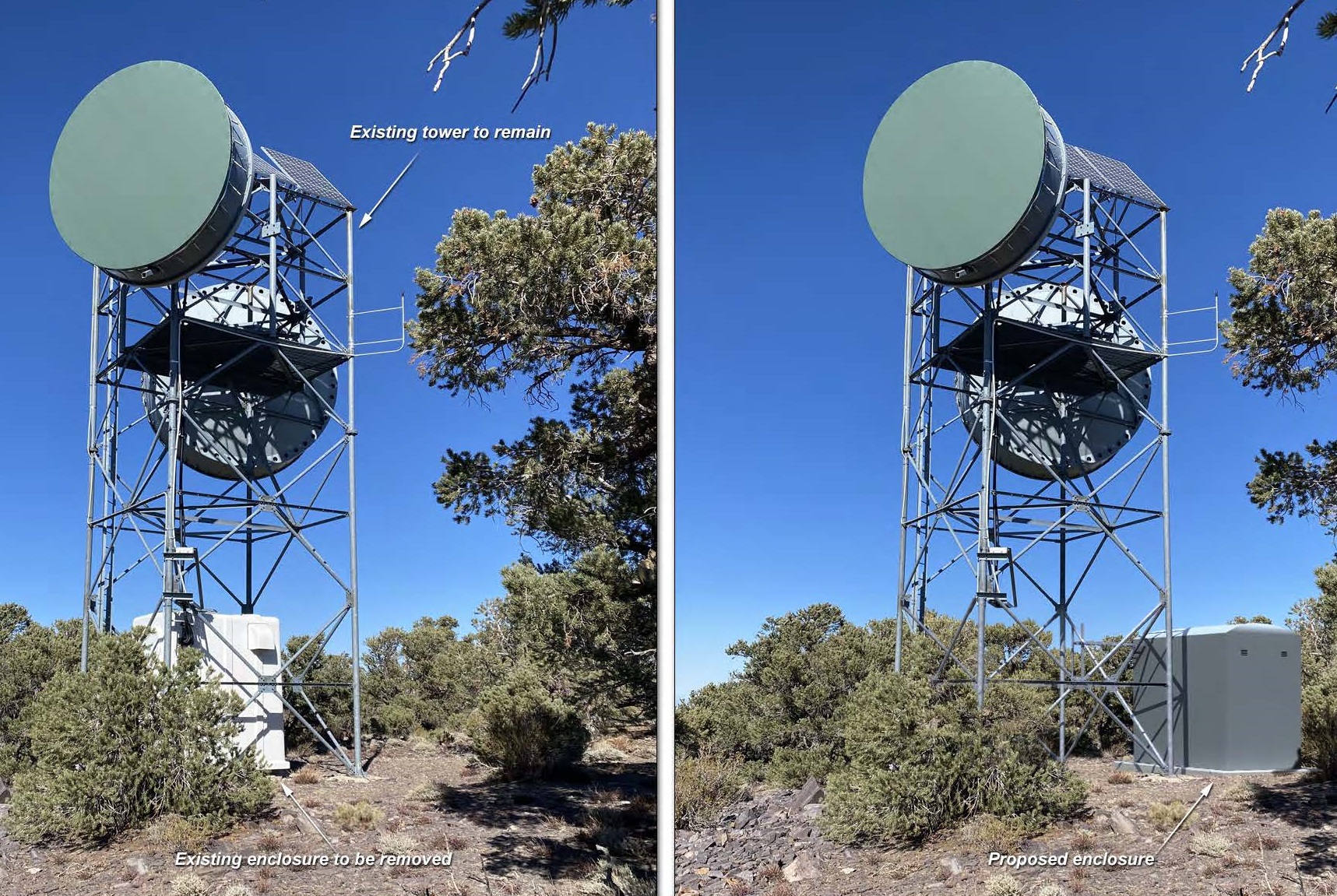News Release
You are viewing ARCHIVED content published online before January 20, 2025.
Please note that this content is NOT UPDATED, and links may not work. For current information,
visit https://www.nps.gov/aboutus/news/index.htm.

AT&T
|
Subscribe
|
Contact: Abby Wines
DEATH VALLEY, CA – Death Valley National Park seeks public input on a right-of-way permit application for continued operation and maintenance of an existing microwave relay facility on Mormon Peak. Without this communications relay facility, there would be no landline or cell phone connection in the park.Due to Death Valley National Park’s remote location, there are no phone lines or fiber cables connecting it to the outside world. Instead, there are a series of facilities transmitting voice and data to and from the park using directional microwave antennas.
AT&T constructed the Mormon Peak facility in 1982. At the time it was on lands managed by the Bureau of Land Management. In 1994, Congress transferred roughly one million acres of BLM land to Death Valley National Park, which included Mormon Peak. At the same time, Congress designated 93% of the park as wilderness, including Mormon Peak. This created controversy because permanent structures and commercial activities are prohibited in wilderness. Congress resolved this conflict in 2019 by specifically authorizing operation and maintenance of the Mormon Peak telecommunications facility in the John D. Dingell, Jr. Conservation, Management, and Recreation Act.
AT&T did not make substantial upgrades to the technology in use on Mormon Peak for many years due to the site’s wilderness status. As connectivity increased across the world, the total capacity through Mormon Peak is currently 90 mbps. This is less than the bandwidth available to individual households in many areas, and it is split between land lines and two cell towers being used by 450 residents of Death Valley and thousands of park visitors. During high-use times, it is often not possible to make phone calls, even to request or coordinate emergency medical services.
AT&T’s proposed upgrades would increase the total bandwidth to 1.5 Gbps, and allow the cell towers at Furnace Creek and Stovepipe Wells to be added to the FirstNet system, which gives emergency responders priority use.
AT&T requests a right-of-way permit to operate, maintain, and upgrade the existing microwave facility. The existing 35-foot-tall lattice tower would remain. The existing equipment shelter would be removed and replaced by a 6-foot by 10-foot equipment shelter adjacent to the tower. Existing solar panels on the tower would be replaced with larger solar panels. A lightning rod would be added and a directional microwave antenna. AT&T would use helicopters to access the roadless site.
Mormon Peak is in the southern Panamint Mountains. The 35-foot lattice tower is not visible to the naked eye from any of the popular viewpoints in the park. Public comments can be made until May 10, 2022 online at https://parkplanning.nps.gov/MormonPeak, or mailed to: Death Valley National Park, ATTN: Mormon Peak, P.O. Box 579, Death Valley, CA 92328. Commenters should be aware that their entire comment – including personal identifying information – may be made publicly available at any time. While commenters can ask that their personal identifying information be withheld from public review, the National Park Service cannot guarantee that this will be possible.
FAQ
Is this a cell tower?No. Mormon Peak does not have a cell tower, and AT&T is not requesting for it to be a cell tower in their right-of-way permit application.
Will this affect telephone service in the area?
The AT&T microwave relay facility on Mormon Peak is a critical link in the communications chain between Death Valley and the outside world. Without it, there would be no landline or cell phone communications within the park.The proposed upgrade would increase the communications bandwidth for the two cell towers in Death Valley at Furnace Creek and Stovepipe Wells, which are currently limited by the capacity of Mormon Peak.
What is the current and proposed data capacity of Mormon Peak?
The current capacity is 90 mbps. The proposed capacity is 1.5 Gbps.
Will this affect views in the park?
Mormon Peak is in the southern end of Death Valley National Park. It is visible from backcountry roads in Pleasant Canyon and Butte Valley. It is not visible to the naked eye from any major visitor attraction. The existing 35-foot gray lattice tower is partially obscured by surrounding pinyon pines. The proposed solar panels on the tower will be larger than the existing ones. However, the visual impact of the facility is expected to continue to be localized and minimal.
Are there any alternatives to the Mormon Peak facility that would allow it to be removed?
Currently, there are no phone lines or fiber optic cables into Death Valley, due to its remote location.About 93% of the park is wilderness, which limits options for new construction. Rogers Peak is a non-wilderness location that was considered. However, since it is farther north in the Panamint Mountains, there are ridges blocking line-of-sight from Rogers Peak to the AT&T facility that Mormon Peak connects to. A tower on Rogers Peak would need to be 300 feet tall to have line-of-sight. A tower that tall would require red flashing lights, and would have a significant impact on views from primary visitor destinations.The best solution long-term would be to install fiber optic cable into the park. In November 2021, the California governor announced a project to install conduit for fiber optic cables in the shoulder of CA-190 from Death Valley Junction to Furnace Creek. Caltrans has this tentatively scheduled for construction in 2027.
Last updated: April 9, 2022
